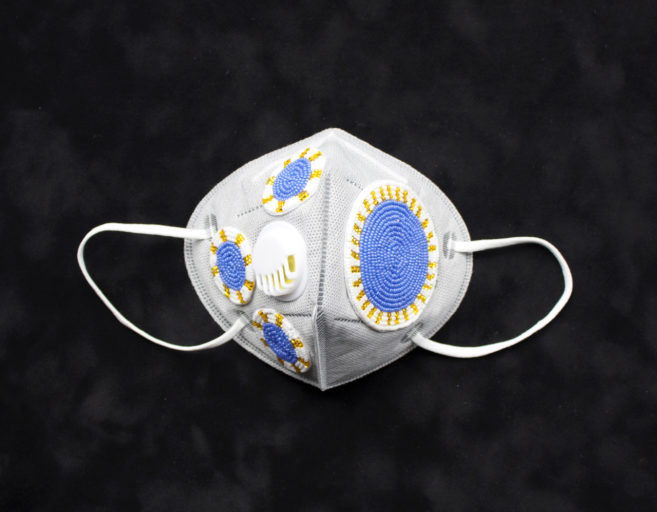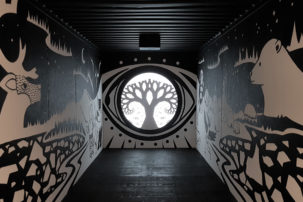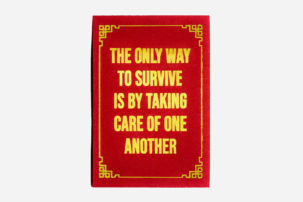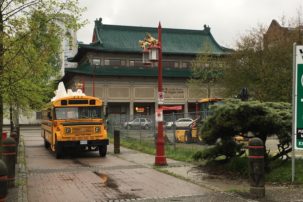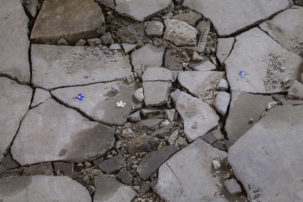Art offers ways to find meaning and inspiration, never moreso than while we’re physically distanced and looking for ways to connect with each other and the world beyond us. Here, we share some of the exhibitions, podcasts, livestreams, texts and audio works that we’ve been reading, watching and listening to over the past week, to help ease the anxiety of these, indeed, strange times.
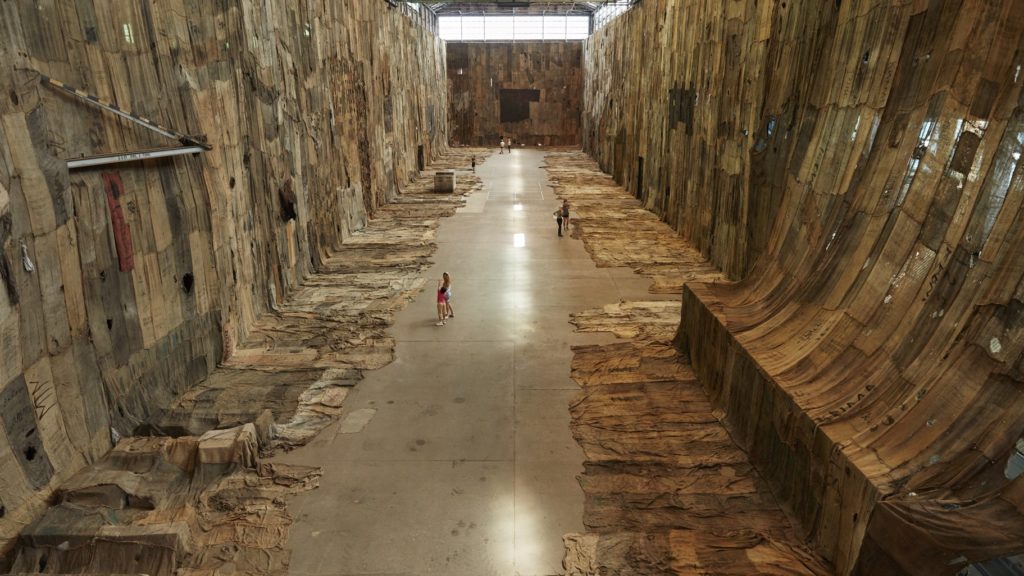
Ibrahim Mahama, No Friend but the Mountains 2012-2020, 2020. Charcoal jute sacks, metal tags and scrap metal tarpaulin, dimensions variable. Installation view for the 22nd Biennale of Sydney, Cockatoo Island. Courtesy the artist; White Cube; and Apalazzo Gallery, Brescia. Photograph: Zan Wimberley

Léuli Eshrāghi, tagatanuʻu, 2017-ongoing. Sand, coconuts, macadamia nuts, coconut water, bowls, books, cushions, coconut scraping stool, live performance, dimensions variable. Installation view (2019) at Sharjah Biennial 14: Leaving the Echo Chamber, Sharjah. Partially commissioned by the Sharjah Art Foundation. Courtesy the artist and Sharjah Art Foundation.

Thirza Cuthand, Woman Dress (still), 2019. 6 min.

asinnajaq, Three Thousand (still), 2017. 14 min.

Tasha Hubbard, nîpawistamâsowin: We Will Stand Up (still), 2019. 98 min.
LINDSAY NIXON
As I watched Jeremy Dutcher’s Facebook livestream of himself playing in his apartment, the tenderness he emanated through the screen reminded me that Indigenous artists have long sustained themselves through times of uncertainty and conflict by making for one another.
Experimental filmmaker Sky Hopinka has put his films online. Hopinka has been redefining Indigenous film, video and new media art with stunning visuals that refuse Canadian spectatorship, draw from Indigenous systems and networks, and speak to the universality and poeticism of Creation.
The Biennale of Sydney—where there was already early buzz on social media about Léuli Eshrāghi’s artwork—announced it would be working with Google to make the biennial available “for everyone, everywhere across the world.” Keep an eye on their website in the coming months.
The Aboriginal Curatorial Collective have begun compiling statements of care from Indigenous curators and artists financially affected by responses to COVID-19. Now, more than ever, we need tender-hearted creators.
The NFB has made some of its Indigenous titles available for public viewing, such as asinnajaq’s short Three Thousand, Tasha Hubbard’s documentary Birth of a Family (Hubbard’s world-altering film about the shooting death of Colten Boushie was also recently made available online through CBC Docs) and Thirza Cuthand’s short Woman Dress.
New Indigenous meme and TikTok accounts are popping up every day. Gen Z digital artists and creators have been ahead of the curve in making their creative knowledge productions easily disemminable to a wide audience through digital platforms. Some current favourites include the @ndntrannies Instagram; artist Chief Lady Bird’s TikTok (@chiefladybird); and for all the process videos, humour and cosplay, and the issue-oriented and aesthetic TikTok accounts, follow @mosomniya, @sherry.mckay, @wanahae, @averysanty and @geronimo.louie.
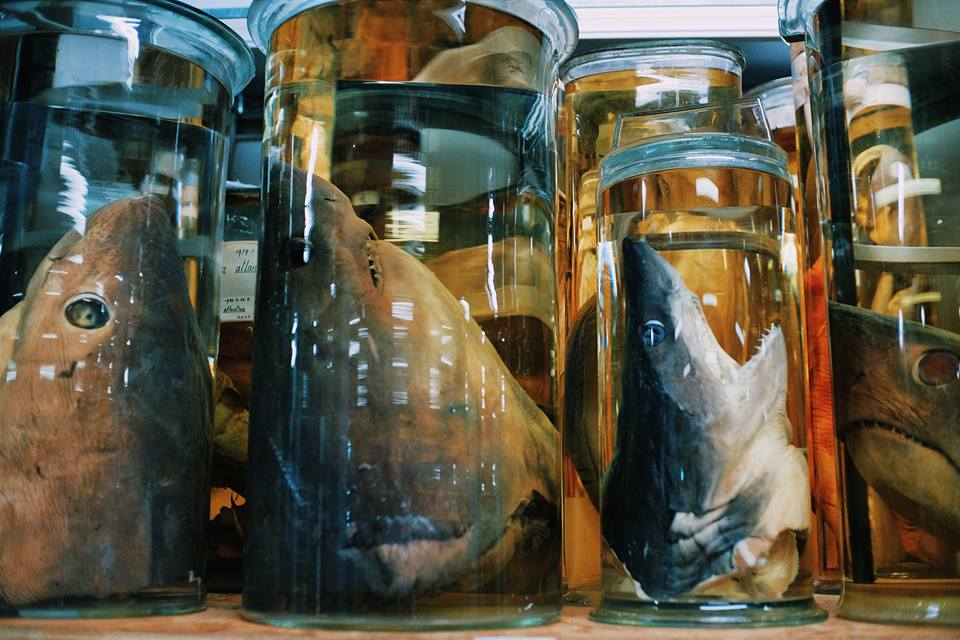
Shezad Dawood, Leviathan Cycle, Episode 1: Ben, 2017. 12 min 52 sec. Commissioned by University of Salford Art Collection, Outset Contemporary Art Fund and Leviathan—Human & Marine Ecology, with support from The Contemporary Art Society. Courtesy MOCA Toronto.

Ed Atkins, Ribbons (still), 2014. 3-channel HD video with three 4.1 channel surround sound audio, 13 min. Courtesy of the artist, Gavin Brown Enterprise, New York, Phi Foundation for Contemporary Art, Montreal.
JAYNE WILKINSON
The last exhibition I saw before COVID-19 shutdowns was Sky Hopinka’s “Around the Edge of Encircling Lake” at the AGYU. Like many artists, Hopinka has made his films available online and, as Lindsay Nixon also mentions, they’re so worth watching right now. Long, wide shots of unfolding horizons and endless sky are a balm for self-isolating eyes, and the accompanying music and poetry remind you of why land and water are worth fighting for.
Museums and galleries around the world are reconfiguring how we experience exhibitions and collections online. MOCA Toronto responded quickly to the closures with a new platform, Shift Key, that will feature artists from recent or upcoming programs. Shezad Dawood’s Leviathan Cycle, Episode 1: Ben (2017) is the first work available, until Friday, March 27. Phi Foundation for Contemporary Art in Montreal also launched a new platform: its podcast series The Aura will release new episodes every Tuesday, beginning earlier this week with British video artist Ed Atkins.
The exhibition Open Justice was already conceived for and hosted online, but it takes on increased timeliness with forced distancing. Films from Malena Szlam, Jamilah Sabur, the Otolith Group, Beatriz Santiago Muñoz, Filipa César, Raphaël Grisey, Bouba Touré and Kàddu Yaraax together offer “a poetic twist on anti-colonial practices that seek to overturn—recalling that the term ‘catastrophe’ enfolds subversion, an ending or hacking of sort.” Assembled by Denise Ferreira da Silva (commissioner), Ronald Rose-Antoinette (curator) and Kevin Yuen Kit Lo (graphic designer), it will run online through June 5, 2020.
The global pandemic has meant surprising access to live events that might have otherwise evaded our personal news feeds. “Slowness: A conversation between Tina Campt, Saidiya Hartman, Simone Leigh, and Okwui Okpokwasili” is a powerhouse lineup of artists, scholars and theorists considering the new resonances of “slowness” in the precise moment when the temporality of life is accelerating and decelerating simultaneously. Tonight at 7 p.m. EST.
If you don’t know Paul Maheke’s performances, you should first check them out (YouTube and Vimeo) and you’ll appreciate the nuances of his essay “The Year I Stopped Making Art” all the more. Its cadence is swift—moving you through time periods, landscapes and subjectivities in the same way a performance can—and its message is powerful. Art might help us in dark times indeed, but this call for art that is beyond representation is a call for solidarity with the artists and people around us first.

Mallik (Jacky Qrunnut) and Japati (Gouchrard Uttak) see a dogteam coming in a scene from One Day in the Life of Noah Piugattuk (2019) Copyright Isuma Distribution International. Photo: Levi Uttak.

On the set of Atanarjuat: The Fast Runner. Directed by Zacharias Kunuk. 2001. Film, 174 min. Courtesy Isuma Distribution International.

“The Payne Whitney Poems,” from James Schuyler: Collected Poems (Farrar, Straus and Giroux, 1993).

From James Schuyler: Collected Poems (Farrar, Straus and Giroux, 1993).
LEAH SANDALS
For a few years now, I’ve been enrolling in workshops led by Toronto poet Hoa Nguyen; each workshop focuses on reading and writing under the influence of another author, and the current one is structured in relation to James Schuyler (1923–91). Schuyler, who sometimes worked as a Metropolitan Museum of Art curator and an art critic with a finely tuned visual sensibility, also often wrote poetry under the constraint of being institutionalized or unable to leave his apartment. As a result, he wrote a lot of amazing poems while just looking out the window and recording daily life in the present tense. Schuyler’s work—and this workshop, which meets online for the rest of term—offers me a lot of solace and connection at the moment, as do some of the free online workshops available through ModPo (a session in the latter on Schuyler’s contemporary John Ashbery is starting soon if you want to sign up).
I’m nerdy and a Gen X-er, so I’ve been surprised and delighted to see the resurgence (I think?!) of email newsletters as a format for talented, literary Millennial and Gen Z authors. Cason Sharpe’s “I Know, Right?” is one of these; another is Emma Healey’s “Apartment Poem.” I know there are more out there too. Anyway, what I like about these types of reading experiences during a time of global crisis is that they seem to offer extended slices of personal life and reflection in a way that other platforms just don’t deliver very well right now. I guess there’s a modicum of privacy, focus and quietude available around them, which is appealing. If you’re looking for another—perhaps more informative than literary, but still great—try YYC Gay History, which regularly offers up nuggets of largely untold Prairie queer history.
It was great to see that the Festival International du film sur l’art, which was scheduled to run in Montreal and Quebec theatres this month, moved online so quickly in response to COVID-19. (There are even a couple days left if you want to check it out on your favourite home screen.) As self-isolation protocols spread, it seems the National Film Board also tried to increase awareness that its extensive catalogue of Canadian films is streamable—including a wide swath of Indigenous cinema. On the latter note, I also want to cite Isuma as a longtime and ongoing leader in making art films more accessible online and to remote audiences. If you are stuck inside, or even if you’re not, it’s worth catching up on their catalogue right now.
I’m a sucker for good news stories, especially in dark times, so this is one stands out to me. The world may be a terrible place, both objectively and subjectively, at certain moments, but it turns out there are supplies some museums, art installers, conservators and artists tend to have on hand—like latex gloves, masks and sterile gowns—that are also useful to hospitals and health care providers right now. And donations large and small are afoot.

Mia Sandhu, (left to right), Bawdy 8, 2020 and Bawdy 7, 2019. Courtesy Patel Gallery.

Nadia Waheed, Aerobeacon, 2019. Acrylic on canvas, 81 x 106 cm. Courtesy Patel Gallery
JOY XIANG
As someone constantly on the border between understanding internet culture and not, I’ve been relying on surreal memes more than I expected. Absurd humour hits the spot, as COVID-19 teaches us more about ourselves in isolation and further compounds undesirable fault lines of our current political and economic structures. Sometimes you need to come home to the nonsensical between how the world operates and how it justly could, of what you can and can’t influence.
Following that, to cope at the dissolution and reconfiguration of everything: as William Basinski’s appearance in Toronto was cancelled, I’ve been listening to The Disintegration Loops on repeat, elegiac and melodic compositions capturing the noise of decaying physical tapes; Kristel Jax, under the musical project Brigitte Bardon’t, released the latest episode of her podcast Drone Therapy, which matches soothing drone sounds to readings from the dialectical behaviour therapy handbook with a dose of dark humour; and Petty Déjeuner, the drag persona of artist James Knott, takes us through an eggy existential crisis on the first episode of Crisis Du Jour.
I’m digging how Patel Gallery has adapted their current show “Crossroads” into a virtual tour format via their Instagram, including extra programming like studio visits and snippets from the artists themselves about their work and process. In a show about storytelling from the borderlands, it’s perhaps a more intimate look into the personal mythologies of the artists (Marigold Santos, Winnie Truong, Mia Sandhu, Nadia Waheed, Alex Sheriff, Greg Ito, Shaheer Zazai and Shuvinai Ashoona) than a physical visit might be—not that one replaces the other. Curator Rebecca Davison Mora writes about existing in two places at once, also resonant with the lives we transfer into and through digital realms.
I have been thinking of past online-accessible projects that provide me comfort with their renewed relevance. Launched this time last year by the Centre for Art Tapes, “Poems for Impending Doom” asked Arielle Twist, Camila Salcedo, Madeleine Scott and Camille Rojas to write poems in pairs about redoing the world over again. The Koffler Gallery’s digital platform released a sweet project in the fall reminiscent of the point-and-click of early Net art: There are Times and Places explores how the internet functions and fails as a space for community and identity-making (check out the slow and deliberate Intimacy Piece by assinajaq and Dayna Danger). Finally, I return often to Jacquelyn Zong-Li Ross’s prose piece “A Brief History of Feeling” to be lulled by the expansive scales of heatful time beyond the current moment: “500 billion years ago–the dark touches itself in the dark…”
“Well Now WTF?”, co-curated by Canadian artist Lorna Mills with Faith Holland and Wade Wallerstein, is an online exhibition of over 60 artists with moving image practices. It launches April 4th and is just going to be fun and sassy. I love weird media art.
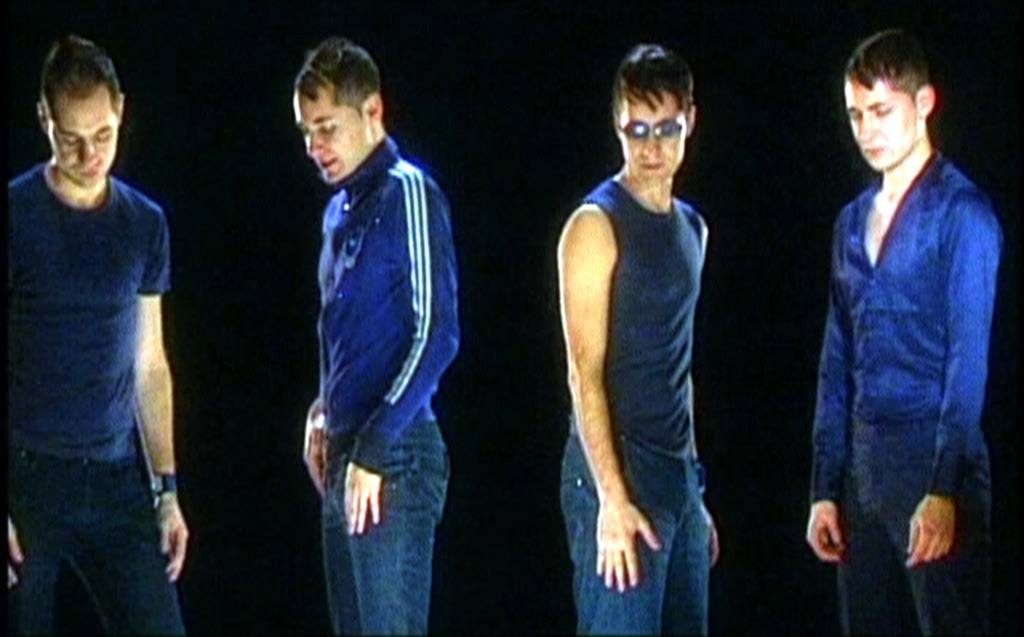
Benny Nemerofsky Ramsay, I Am a Boy Band, 2002. BetaSP video. 5 min 24 sec.

Sophia Oppel, how to patent a trace, 2018. Laser-cut acrylic, gel wax, TV wall mounts, chain, video projection, sound. Photo: Jessy Kitchen.

Valérie Blass, Échapper à la psychologie, 2019. Chair base, plaster, and inkjet print on polyester, 31 x 18 x 14 in. Courtesy Catriona Jeffries.
ANGEL CALLANDER
Since Netflix’s wealth of non-audience-tested series has not offered me anything good for quite a while, I have turned elsewhere for my escapist media and background noise to ambient anxiety. The National Film Board has reminded us there are more than 4,000 films available free online, and now is a great opportunity to brush up on Canada’s film history. Find something new, find something weird! One of my long-time personal favourites is Peter Foldès’s short Hunger (1973).
American filmmaker Kate Lain created “CABIN FEVER: Coping with COVID-19 playlist of online experimental films & videos” as a crowdsourced resource for experimental film and video art. Organized in such a way as to feed certain moods, it has now reached 33 pages and includes links to works by Jeremy Bailey, Allyson Mitchell, Amy Lockhart, Benny Nemerofsky Ramsay, Sabrina Ratté, Deirdre Logue, Norman McLaren, Christina Battle and Joyce Wieland.
Instead of cancelling or postponing events, SUGAR Contemporary has continued its public programming by moving scheduled talks and panels to live feeds online. On Friday, April 3, at 5 p.m. EST will be Patricia Reed’s talk “On Witnessing Otherworlds.” The recording of the very timely panel from March 18, “Scales of Bioprocessing: Self Care and Healthcare” with Shawn Hercules, Ramy Kim and Ananda Gabo, is still available as well.
Recently included in the New York Times’ roundup of top-10 art podcasts, the homegrown MOMUS podcast, hosted by Sky Goodden and Lauren Wetmore, has a series of binge-worthy episodes to answer the timeless question, “What makes art great?” What better time to contemplate the complexity of this question than now, when the output of artists is proving to be uniquely comforting?
Alternative art space Hearth in Toronto hosts audio mixes curated by local artists and collaborators. Currently there are nine mixes, by Fan Wu, Shellie Zhang, Steven Beckly, Sophia Oppel and others, ranging between half an hour and an hour in length.
And if you happen to be mourning the end of the biennial stream and art-related travel for the foreseeable future (I’m not sure I am, but the real effects of this are yet to be seen), Art Basel will be experimenting with online viewing rooms. Complete with VIP Preview on March 18-19, the inaugural edition ran from March 20-25, but the inherent uncertainty in postponing art fairs and biennials this year may make this a common practice for others very soon.

